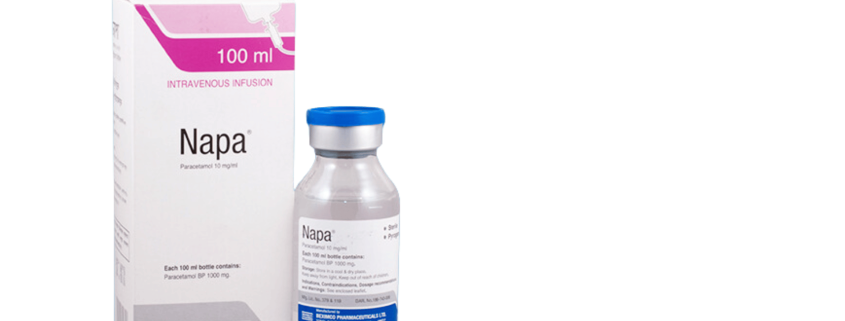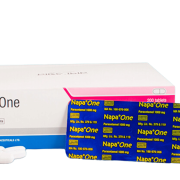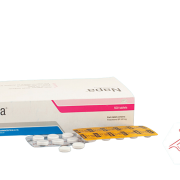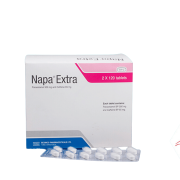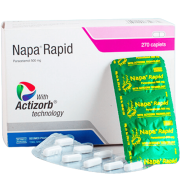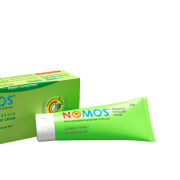Napa IV
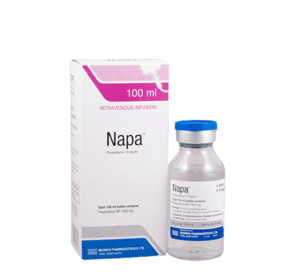
Generic Name: Paracetamol (10 mg/ml) IV Infusion
Dosage Form: IV Infusion
TG Name: Analgesics & Antipyretic
What is Napa® IV?
Napa IV is the Intravenous infusion formulation of Paracetamol. Paracetamol is an analgesic and antipyretic agent, recommended worldwide as a first-line agent for the treatment of pain and fever in adults and children. Napa Iv is a sterile, clear, colorless no-pyrogenic isotonic formulation intended for intravenous infusion.
Why Napa® IV?
The easiest and cheapest method of administration is oral but that is not an option intraoperatively or in some patients with bowel obstruction, for example. The rectal form of administration is unreliable and erratic. It gives a very variable peak plasma concentration, which is also reached later, at 2 to 3 hours. As with most drugs, intravenous administration is more reliable and reaches peak concentrations faster compared with oral routes, as proven for Paracetamol . Paracetamol has a different mechanism of action compared with usual analgesics like opiates and non-steroidal anti-inflammatory drugs, which have considerable adverse effects. Since Paracetamol’s side effect profile is considerably superior, availability of an intravenous form is very useful when other routes are less feasible.
When to take Napa® IV?
Napa® IV is indicated for the management of mild to moderate pain; the management of moderate to severe pain with adjunctive opioid analgesics; and the reduction of fever.
How to take Napa® IV?
Dosing of Napa® IV
| Adults, adolescents and children ≥ 2 years of age | ||||
| Age Group (Adults and Adolescents) | Dose every 6 hrs | Dose every 4 hrs | Maximum single dose | Max total daily dose |
| 13 years and older (Weighing ≥ 50 kg) | 1000 mg | 650 mg | 1000 mg | 4000 mg |
| 13 years and older (Weighing < 50 kg) | 15 mg/kg | 12.5 mg/kg | 15 mg/kg (upto 750 mg) | |
| Neonates and infants | ||
| Age Group | Dose every 6 hrs | Maximum total dose |
| Neonates (0 to 28 days) | 12.5 mg/kg | 50 mg |
| Infants (29 days to 2 years) | 15 mg/kg | 60 mg |
-Napa® IV is approved for use in patients ≥2 years of age
-Minimum dosing interval is Q4h
-No dose adjustment is required when transitioning to oral acetaminophen in adults and adolescents
-Napa® IV should be administered only as a 15-minute infusion. Administer only as directed
-Napa® IV should be stored at 20° C to 25° C (68° F to 77° F)
-For single use only. The product should be used within 6 hours after opening
Who should not take Napa® IV?
Patients who have liver failure, liver problems, overdose of the drug Paracetamol, habit of drinking Too much alcohol or have known hypersensitivity should avoid Napa® IV.
How Napa® IV works?
The precise mechanism of action of paracetamol is not fully clear. It has always been thought to have a strong central action, supported by the fact that paracetamol is found in significant concentrations in the CSF after infusions in adults and in children.
Prostaglandin synthesis relies on the action of cyclooxygenase (Cox) enzymes on arachidonic acid. For this to occur, cyclooxygenase must be in an oxidised form. Paracetamol seems to reduce this oxidised form, rendering the enzyme less effective. Reduced prostaglandin synthesis in this manner may explain analgesia. Paracetamol is also thought to affect the endogenous cannabinoid system. Paracetamol is metabolised to AM404, also known as N-arachidonoylphenolamine. This compound prevents the reuptake of endogenous cannabinoids like anandamide from the synaptic cleft. Since blockade of cannabinoid type 1 (CB1) receptors attenuate the action of paracetamol, this theory is gaining credibility. AM404 is also a TPRV1 agonist, which is also activated by the analgesic drug capsaicin. Paracetamol may act along the same lines.
Cox, TPRV1 and cannabinoids in combination could be involved not only in pain, but also thermoregulatory pathways.
Another candidate for the action of paracetamol is the 5-HT3 receptor. A 5-HT3 antagonist was found to block the antinociceptive action of intrathecal paracetamol [20], supporting this notion.
How supplied?
Napa® IV is supplied in a 100 ml glass bottle containing 1000 mg Paracetamol (10mg/ml).

